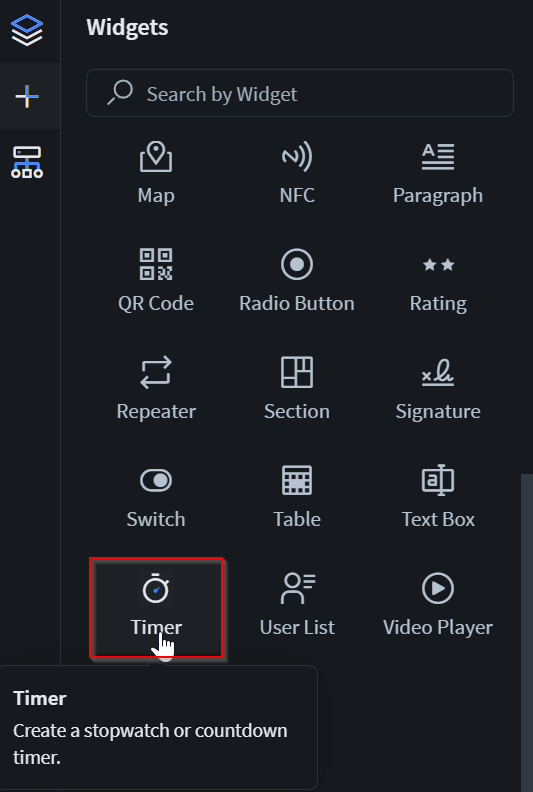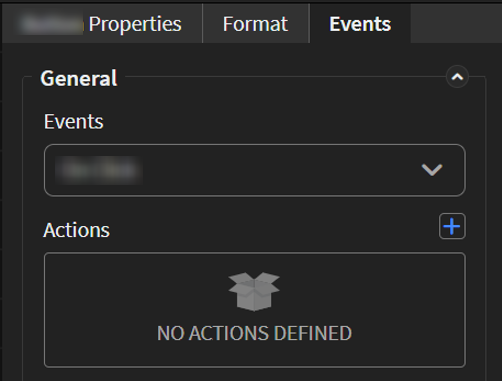Adding a Timer Widget
Before you begin
Remember: The timer does not start by itself. You must add at least one
widget (such as a button) specifically used
for managing the timer.
About this task
Use the Timer widget if you need a countdown timer or a stop watch for your app's functionality. To add a timer widget:
Procedure
- In the Canvas, open the Widgets tab.
-
Double-click or drag the Timer widget onto the app
canvas.
 The Timer Properties panel displays on the right with its sections.
The Timer Properties panel displays on the right with its sections. -
In the General section, set the following fields:
- Enter an ID and Name for the widget or keep the defaults.
-
In the Timer Properties section, set the following
fields:
- In the Text Formatting section, change the default formatting settings for text.
-
In the Widget Alignment section, choose how you want to
align your widget in the app.
- Align Left
- Center
- Align Right
- Optional:
In the Rules section, add a visibility rule to the widget.
Use visibility rules to control when a widget is visible to the app user. For example, you can create a condition that a widget should only appear after the app user fills in a field or submits a form.
- Select Visibility Rule to open the Set Visibility Rule dialog box.
- Select whether the visibility rule requires meeting all or any conditions.
- Select an app field or variable and an operator from the Field list. Enter the value required for the widget to be visible.
- Select Add Condition to add another condition.
- Select Save.
- Optional:
In the Miscellaneous section, decide which name you want
to appear in the widget report.
The Same as widget name setting is the default selection and automatically uses the widget name as the chart title. To choose your own chart title, clear the option and enter a new name.
You may use special characters except for
%&<>{}*|^and double spaces. - Move to the Format tab to customize the widget's appearance.
- Optional:
Add events and actions to the widget.
Events are activities that you can set to trigger an Action. For example, you can configure a widget to navigate to a new section in the app when the user selects it.Important: Events and actions offer a wide range of combinations. The following steps are guidelines only. Replace the listed events and actions with ones that suit your app's needs and structure. Learn more about available events and actions at Events and Actions.
- For the other Widget(s) used for managing the timer, configure its Events and Actions with Timer Actions.
-
Select Save in the SOTI Snap
banner to apply your changes.

Results
Tip: Select Preview to see how the widget
appears in your app.
